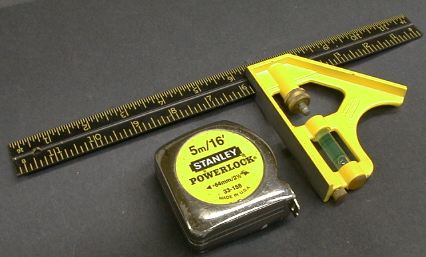

Rulers are used to measure the length of an object or its edge precisely and as a guide for drawing or scoring straight lines. The spacing forms a measuring scale of either metric or imperial measurements, which are usually in increments of centimetres (cm) and millimetres (mm) and inches (sometimes denoted as ") respectively. Rulers can be purchased at stores selling drafting tools, art supply shops and DIY stores.A ruler, also known as a rule, is a flat, straightedge measuring instrument with equally marked spacing etched or moulded along its length. In this way, there are countless types and uses for what we simply call the “ruler”. Another tool for ensuring consistency is the protractor, used to measure angles. The L-shaped carpenter’s square is a typical Japanese carpenter’s tool used for checking right angles, drawing lines and various other purposes. These are called templates and there are various types. Some rulers have cut-out circles, ellipses, text, symbols and shapes on them. The French curve and the adjustable ruler are special tools for drawing curved lines. But this is rarely used in ordinary settings. Another drafting instrument is the dashed-line ruler for drawing dotted or broken lines. Although used less frequently in recent years, when drafting, a T square is used with set squares on the drafting board to draw parallel and perpendicular lines. When two set squares are used in combination, they can be used to draw horizontal and perpendicular lines. In general, those used for drawing lines and as a cutting guide are referred to as straight edges, and those used for taking measurements, rulers.Ĭommonly-used rulers include the straight edge for drawing straight lines and the set square. Some rulers have measurement gradations and can be used for measuring length. It is available in different shapes and materials, depending on the type of lines the user wishes to draw.


A ruler is a stationery item and drafting tool used when drawing lines, as a guide for cutting, and for various other uses.


 0 kommentar(er)
0 kommentar(er)
